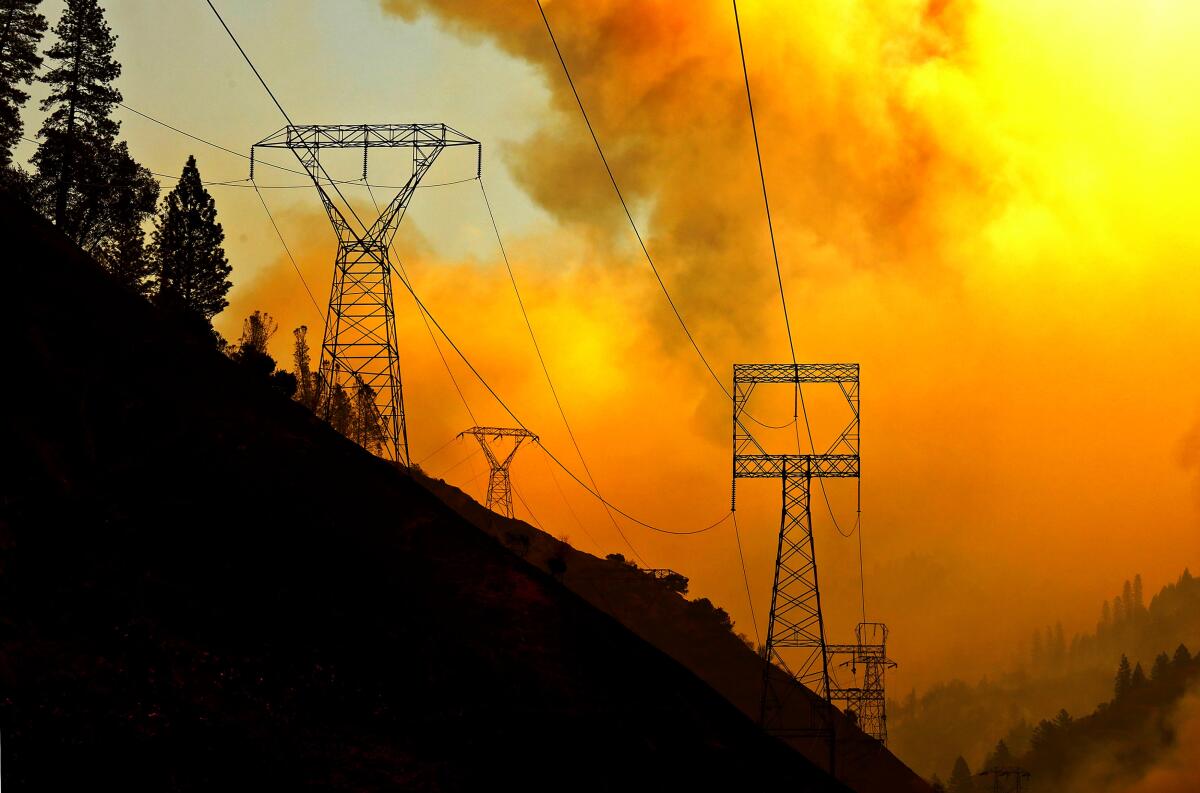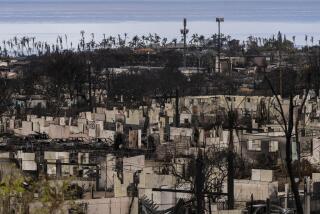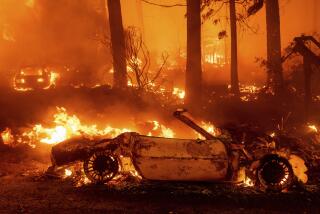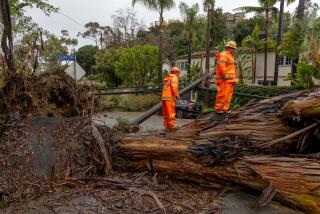PG&E should be fined $166 million for botched power shut-offs, watchdog agency says

The California Public Utilities Commission’s independent consumer watchdog arm is recommending that Pacific Gas & Electric be fined nearly $166 million for the company’s failure to properly warn customers of a series of intentional power outages last fall.
At their height, the so-called public safety power shut-offs of October 2019 left nearly 1 million PG&E customers across 38 counties without electricity, some for as long as a week. The outages were designed to prevent electrical equipment from igniting blazes like the Camp fire, which destroyed the town of Paradise and killed 85 people after being sparked by a PG&E power line a year earlier.
But the San Francisco-based company failed to notify tens of thousands of customers that blackouts were imminent, including hundreds who depended on steady electricity to power life-sustaining medical devices. Many people couldn’t access PG&E’s website for several days, as it was overwhelmed by visits from Northern and Central California residents scrambling for information.
Record heat. Raging fires. What are the solutions?
Get Boiling Point, our newsletter about climate change, the environment and building a more sustainable California.
You may occasionally receive promotional content from the Los Angeles Times.
The PUC’s Public Advocates Office argued in a brief Friday afternoon that the utility should be fined $101.29 million for failing to warn so-called medical baseline customers; $41.51 million for the inaccessibility of its website; $15.3 million for not properly notifying facilities such as hospitals, fire departments and water utilities; and $7.64 million for repeated failure to warn some customers.
The power outages “disrupted the lives of hundreds of thousands of Californians and caused substantial economic damage,” the consumer watchdog office wrote. “If left unchecked, PG&E’s [public safety power shut-off] failures will result in loss of life.”
In its own filing to the commission Friday, PG&E argued that it shouldn’t pay any fine. The company said it “undertook a months-long process to educate, prepare, and support” its customers in advance of fall 2019 fire-weather conditions, and as a result of that process “successfully notified over 1.75 million customers — over 97% of the population affected by the events in question.”
“To be sure, our goal is 100% notification,” the company wrote.
PG&E’s CEO has said wildfire-prevent blackouts could continue for another decade.
PG&E also wrote that it “acted promptly to address the website problems and to restore access to the website as soon as possible,” and was able to increase the site’s capacity so it was fully available during intentional blackouts later in the month.
More recently, the utility shut off power to 361,000 customers as fierce Diablo winds blew through Northern California this week. Spokeswoman Lynsey Paulo said in an email that since last year, the company “has worked diligently to update and improve our operational processes and systems to make [public safety power shut-off] events smaller, shorter and smarter for our customers.”
“We know that losing power significantly disrupts people’s lives, especially for those with medical needs and customers sheltering-at-home in response to COVID-19,” she said.
Southern California Edison and San Diego Gas & Electric have also used power shut-offs as a tool for limiting wildfire danger. But neither utility has turned to intentional outages as much as PG&E, which has the state’s largest and most heavily forested service territory, as well as the worst recent history of fires ignited by power lines. The company filed for bankruptcy protection in January 2019 under the weight of an estimated $30 billion in fire-related liabilities, finally emerging from Bankruptcy Court this summer.
In addition to what critics see as utility negligence, climate change has played a major role in fueling more devastating fires in California and across the West. The Golden State has experienced five of the six largest blazes in its modern history since August.








